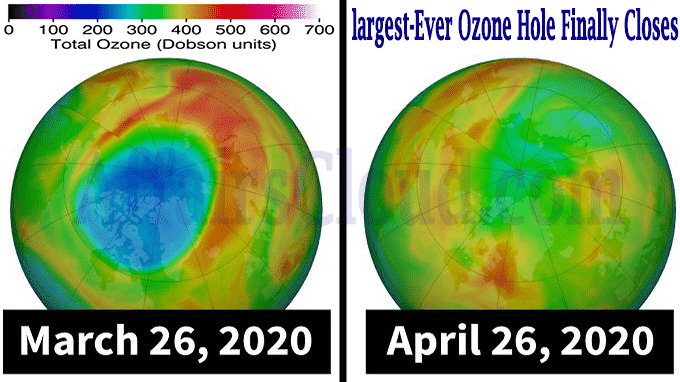In accordance with the United Nations (UN) World Meteorological Organization (WMO), “record-level” ozone hole over the Arctic, which was in news in March 2020, has now closed. Scientists have been monitoring the hole at the Copernicus Atmosphere Monitoring Service (CAMS), a European Union (EU) earth observation program.
- This ozone hole became the largest one ever recorded in the Arctic region spanning an area of over 620,000 square miles (or 997793.28 km) and confirmed at the Copernicus Climate Change Service (C3S) and Copernicus Atmosphere Monitoring Services (CAMS) by the European Centre for Medium-Range Weather Forecasts (ECMWF).
- The last time such a strong chemical ozone depletion was observed in the Arctic occurred nearly a decade ago, in 2011.
- Copernicus Climate Change Service (C3S) is the European Union’s climate monitoring service. It is vital to study and monitor climate change adaptation. Also, provides climate and climate change information and knowledge by means of accessible, timely, reliable, and user-oriented products.
How does the ozone layer gets depleted?
The phenomenon was driven by ozone-depleting substances still in the atmosphere and a very cold winter in the stratosphere, a layer of the earth’s atmosphere that lies between 10 and 50 kilometres (six to 31 miles) above the earth. These two factors combined to give a very high level of depletion of ozone.
- It should be noted that the Antarctic ozone hole forms every year because winter temperatures in the area, allowing the high-altitude clouds to form. These conditions are much rarer in the Arctic but this year, powerful westerly winds flowed around the North Pole which resulted in ozone depletion.
About World Meteorological Organization (WMO)
Headquarters– Geneva, Switzerland
Secretary-General– Petteri Taalas




